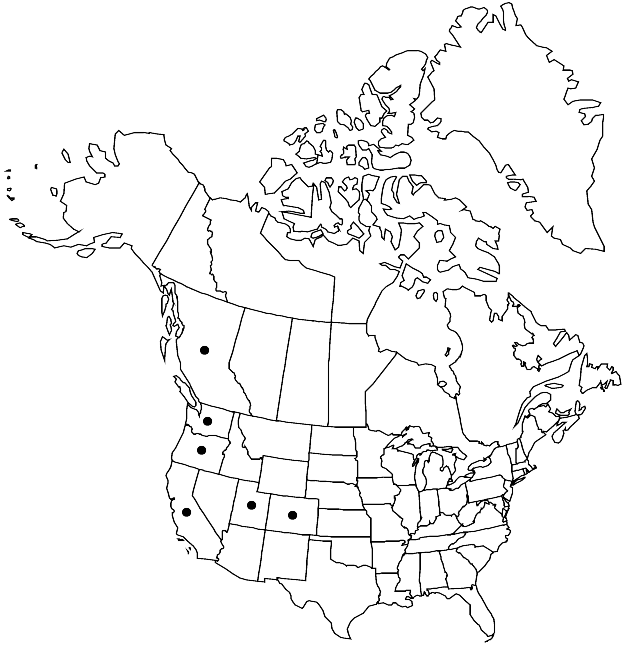Difference between revisions of "Gemmabryum barnesii"
Phytologia 89: 111. 2007.
FNA>Volume Importer |
imported>Volume Importer |
||
| (2 intermediate revisions by 2 users not shown) | |||
| Line 52: | Line 52: | ||
|publication year=2007 | |publication year=2007 | ||
|special status= | |special status= | ||
| − | |source xml=https:// | + | |source xml=https://bitbucket.org/aafc-mbb/fna-data-curation/src/2e0870ddd59836b60bcf96646a41e87ea5a5943a/coarse_grained_fna_xml/V28/V28_208.xml |
|genus=Gemmabryum | |genus=Gemmabryum | ||
|section=Gemmabryum sect. Gemmabryum | |section=Gemmabryum sect. Gemmabryum | ||
Latest revision as of 21:34, 5 November 2020
Plants green or yellow-green. Stems 0.2–1 cm, gemmiform to evenly foliate. Leaves ovate to ovate-lanceolate, weakly concave, 0.5–1.5(–2) mm; margins plane to revolute proximally; apex acute to acuminate; costa percurrent to rarely short-excurrent; proximal laminal cells abruptly quadrate to short-rectangular, 1–2:1; medial and distal cells 8–12(–16) µm wide, 3–4:1. Specialized asexual reproduction by leaf axil bulbils, bulbils (1–)5–25 per axil, conic, 200–450 µm, primordia distinct, broad, leaflike, obtuse, arising from distal 1/3 of bulbil. Capsule nutant, purple-red at maturity, 1–3 mm; hypophysis thickened, not inflated, not or weakly rugose; peristome well developed; endostome not adherent to exostome, basal membrane high, segments well developed, perforations ovate, cilia long, appendiculate.
Phenology: Capsules mature Apr–Jul (spring–summer).
Habitat: Dry to damp soil, sandy disturbed sites
Elevation: low to moderate elevations (0-1200 m)
Distribution

B.C., Calif., Colo., Oreg., Utah, Wash., w, s Europe, w Asia (Turkey).
Discussion
Gemmabryum barnesii is similar to G. dichotomum, but the plants produce numerous smaller bulbils in the leaf axils. The bulbils are green when young and brown with age with primordia less than 1/3 the bulbil length. This species is typically found on disturbed soil that dries out following winter rains. The report by A. Vanderpoorten and C. E. Zartman (2002) for Colorado is tentatively accepted here, as G. barnesii has also been found in Utah. Reports from Florida need to be confirmed. The species is most common in Mediterranean climates along the coast of western North America.
Selected References
None.